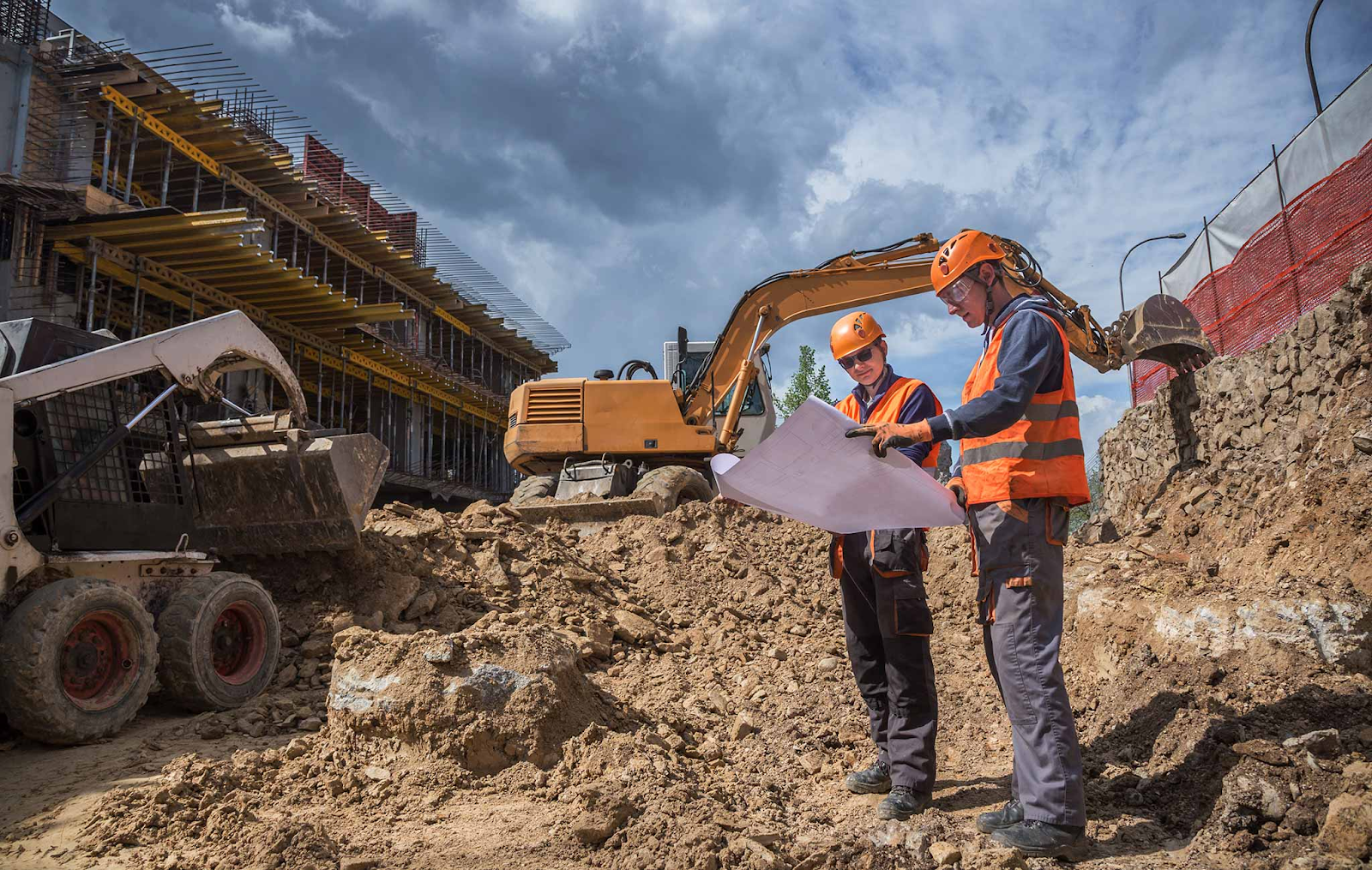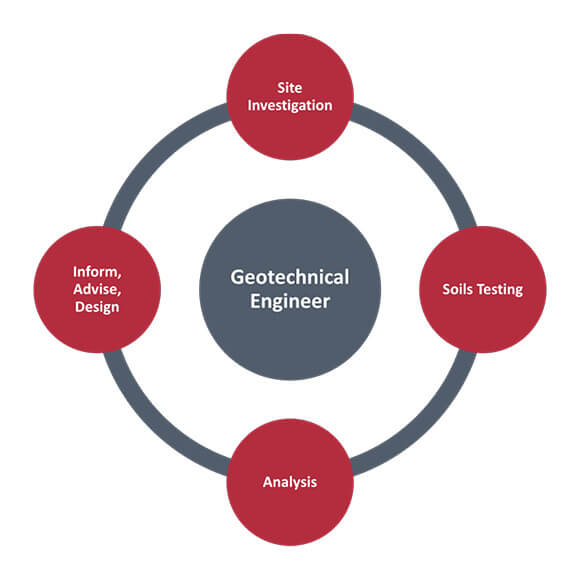Specialized Geotechnical Engineering Solutions - An Overview
Facts About Specialized Geotechnical Engineering Solutions Uncovered
Table of ContentsThe Of Specialized Geotechnical Engineering SolutionsThe Greatest Guide To Specialized Geotechnical Engineering SolutionsThe Main Principles Of Specialized Geotechnical Engineering Solutions Specialized Geotechnical Engineering Solutions Fundamentals ExplainedAbout Specialized Geotechnical Engineering SolutionsIndicators on Specialized Geotechnical Engineering Solutions You Should Know
William Rankine, a designer and physicist, developed an alternate to Coulomb's earth stress concept. Albert Atterberg established the clay consistency indices that are still made use of today for soil classification. In 1885, Osborne Reynolds recognized that shearing reasons volumetric expansion of dense products and contraction of loose granular products. Modern geotechnical design is claimed to have actually begun in 1925 with the publication of Erdbaumechanik by Karl von Terzaghi, a mechanical designer and rock hound. Terzaghi also created the structure for theories of bearing ability of structures, and the theory for prediction of the price of settlement of clay layers as a result of debt consolidation. Later on, Maurice Biot fully developed the three-dimensional dirt combination theory, expanding the one-dimensional design previously developed by Terzaghi to a lot more general theories and presenting the set of standard equations of Poroelasticity.
Geotechnical engineers explore and identify the properties of subsurface problems and materials.
The Definitive Guide to Specialized Geotechnical Engineering Solutions
Geologic mapping and interpretation of geomorphology are usually completed in examination with a geologist or engineering rock hound. Subsurface exploration normally includes in-situ testing (for example, the common infiltration test and cone penetration test). The excavating of examination pits and trenching (specifically for locating mistakes and slide aircrafts) might also be utilized to discover regarding dirt conditions at deepness. , which makes use of a thick-walled split spoon sampler, is the most usual means to collect disrupted samples.

Typically, the user interface's precise geometry is unidentified, and a simplified interface geometry is presumed. Finite slopes call for three-dimensional models to be assessed, so most inclines are assessed presuming that they are infinitely wide and can be represented by two-dimensional versions.
The Definitive Guide for Specialized Geotechnical Engineering Solutions

Dimension of quantities and assessment of actual conditions. Design alteration per real problems The empirical technique is ideal for building and construction that has actually already begun when an unexpected growth occurs or when a failing or crash looms or has currently happened. It is improper for projects whose design can not be altered throughout building.
Concepts of Geotechnical Engineering. Thomson Discovering. Budhu, Muni (2007 ). Soil Auto Mechanics and Foundations. John Wiley & Sons, Inc. . ISBN 978-0-471-43117-6. Disturbed dirt buildings check my reference and geotechnical style, Schofield, Andrew N., Thomas Telford, 2006. Guerriero V., Mazzoli S. (2021 ). "Theory of Effective Anxiety in Dirt and Rock and Implications for Fracturing Processes: A Testimonial".
Fascination About Specialized Geotechnical Engineering Solutions
Concepts and Practice of Ground Enhancement. Ground Improvement Concepts And Applications In Asia. Style evaluation in rock mechanics.
Cengage Learning, Stamford, 666 p. Atkinson, J., 2007. The technicians of dirts and foundations. Taylor & Francis, N.Y., 442 p. Drifting Offshore Wind Generators: Reactions in a Sea state Pareto Optimum Layouts and Economic Assessment, P. Sclavounos et al., October 2007. Nicholson, D, Tse, C and Penny, C. (1999 ). The Observational Method in ground engineering concepts and applications.
10 Easy Facts About Specialized Geotechnical Engineering Solutions Shown
These records are tailored to find fulfill the specific requirements of a task and consist of design parameters and guidance for the construction of a range of man-made frameworks. As supplying consultancy solutions covering areas such as slope security and load-bearing capabilities for different products, these engineers undertake study and development activities to boost techniques, devices, products understanding and analysis covering entire lifecycles.
Design the buildings and technicians of rocks including the application of characteristics, liquid mechanics, kinematics and product technicians. This unites geology, dirt and rock auto mechanics, and architectural design for the design and construction of foundations for a series of civil design tasks. This field involves predicting the efficiency of structure dirt and rock to a lots imposed by a structure, while taking click here now into consideration performance, economic situation and safety.
Rates of pay generally increase as your expertise and abilities grow, with guidelines directing to a graduate beginning salary of in between 18,000 and 28,000 per year in the UK. This climbs to 26,000 to 36,000 with a couple of years of experience and afterwards getting to 40,000 to 60,000+ for senior, chartered or master designers.
Specialized Geotechnical Engineering Solutions Things To Know Before You Buy
With the best application it is feasible to master the career and gain entry to a difficult yet rewarding and vital career. A rock hound would require to re-train to end up being a geotechnical engineer, although there is plenty of cross-over between both careers, which might make this much easier. Rock hounds need to have an understanding of soils, rocks and various other products from a clinical viewpoint, while geotechnical designers tale their understanding of matters such as soil and rock auto mechanic, geophysics and hydrology and apply them to engineering and environmental projects.
When starting out, these engineers will often tend to function on less complicated projects, building up expertise and experience ready for more challenging work later on. Geotechnical designers have a tendency to specialise in certain locations as they expand in experience, concentrating on particular infrastructures such as railways, roadways or water. These designers likewise work with renewable energy, offshore and onshore oil and gas, nuclear power, and much more.